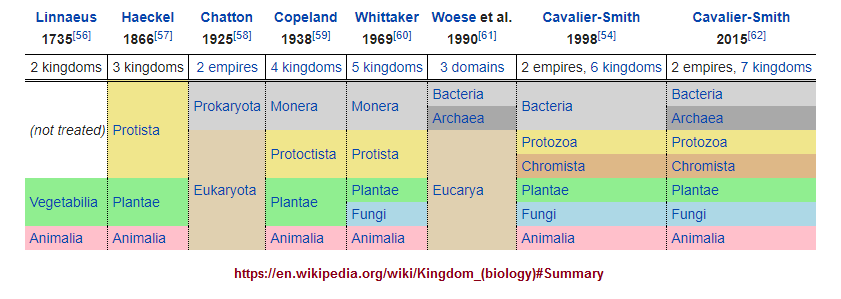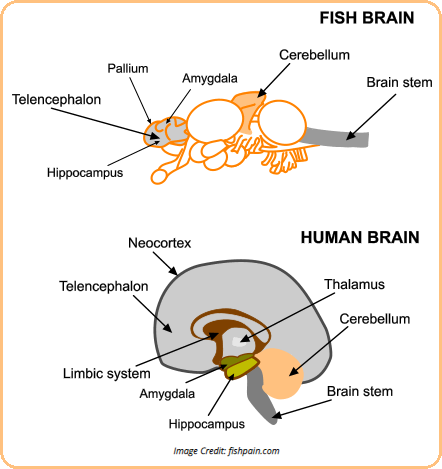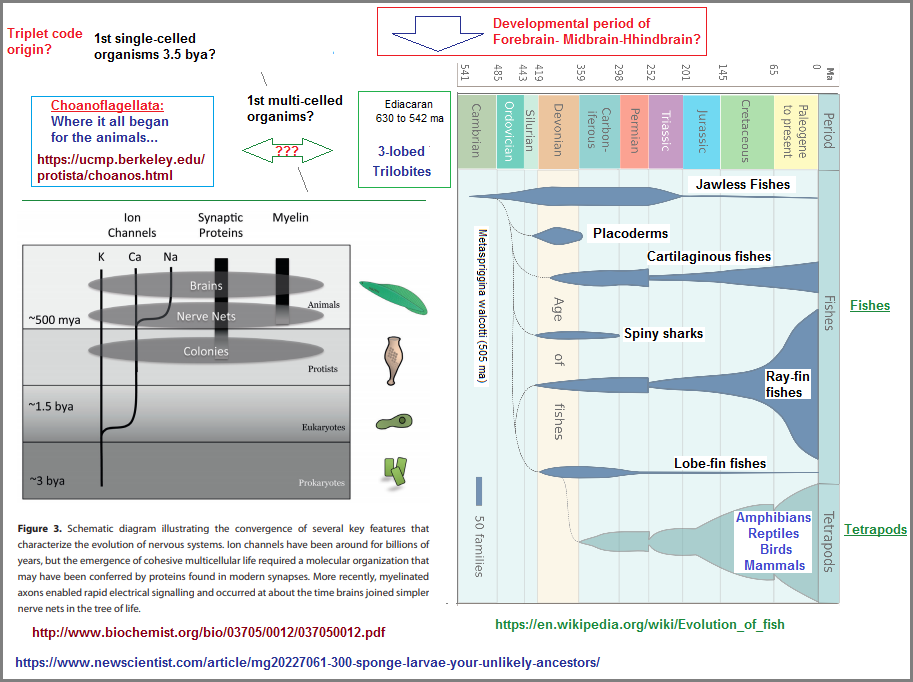~ 7 ~
~ The Study of Threes ~
http://threesology.org
Researchers as of 8/29/2019
| Devil's Advocate Series: | ||||||||
|---|---|---|---|---|---|---|---|---|
| 1 | 2 | 3 | 4 | 5 | 6 | 7 | 8 | 9 |
| 10 | 11 | 12 | 13 | 14A 14B |
15 | 16 | 17 | 18 |
| 19 | 20 | 21 | 22A 22B |
23 | 24 | 25 | 26 | 27 |
| 28 | 29 | 30 A | 30 B | 31 | 32 | 33a | 33b | 33c |
| 34 | 35 | 36 | 37 | 38 | 39 | 40 | 41 A | 41 B |
It is of need to point out the difference between a "Threesological" analytical approach and the numerously applied to other genres of analysis such as Numerical Phenetics found in biology, since much of the examples in this series being presented, will be focused towards biological representations and their precursors over large expanses of time and not limited to a single species nor assumed lineage thereof. Here is a perspective that looks at Numerical Phenetics that may appear to apply to a "Threesological" approach, but should be viewed as describing the selectiveness of numerical Phenetics and not the overall approach I am presently using in an attempt to describe cognitive applications of criteria as inter-related "species" of orientation which can develop maturationally, diverge, contract, etc..., and even go extinct over time. For example, a recurring species of thought processing is to use a one-two-three profile that may or may not "change its stripes" from one subject's location to that of another.
For example, if we look outside biology we can find numerous examples of ideas with a "three-patterned" orientation, even if such a recurrence is not customarily identified nor acknowledged. The absence of other acknowledgements of other patterns is part of the overall consideration as well as the fact that when looked at in total, the recurring cognitive patterns shows a usage of small number orientations... typically in the 1, 2, 3.... to nine size. Some patterns such as one, two, three and even four or five show a greater volume of re-usage than do other patterns. Yet, the fact that we are using small number references is a reference to a constraint and not necessarily because of that which is being analyzed.
Abstract:Phenetic clustering, the forming of hierarchical non-overlapping groups strictly according to degree of similarity, has serious shortcoming as it is commonly used in biology. When used as a method for estimating phylogeny, phenetic clustering rests on a questionable assumption of correspondence between similarity and recency of common ancestry. This compromises its ability to reconstruct the correct branching sequence when rates of evolutionary divergence are unequal among lineages, as well as causing it to obscure rate differences even when the branching sequence is reconstructed correctly. When used as a method for analyzing patterns of geographic variation and genetic continuity among populations, phenetic clustering rests on a questionable assumption of correspondence between similarity and degree of genetic continuity. This compromises its ability to identify genetically continuous units when their component populations are differentiated, and combined with its sensitivity to uneven geographic sampling, it can cause the method to yield misleading results if sampling patterns are not taken into consideration. Finally, even when used simply as a method for analyzing patterns of similarity without regard to causal processes, phenetic clustering rests on a questionable assumption of nested hierarchical structure. This compromises its ability to represent similarity relationships accurately when those relationships exhibit a significant non-hierarchical component. For all of the common biological applications of phenetic clustering, there exist alternative analytical methods that do not suffer from the problems associated with phenetic clustering. The problems in question result not from the phenetic (similarity) data themselves, which often can be analysed in more appropriate ways, but from the phenetic clustering procedure. At least some of the limitations of phenetic clustering as well as the advantages of alternative methods have been known for many years. Advocacy of phenetic clustering at the expense of more appropriate methods can be explained as the result of constraints imposed by an implicit assumption of nested hierarchies that was part of the taxonomic context within which the methods were developed.
Phenetic Clustering in Biology by Kevin D. Queiroz and David A. Good, 1997
Let us look at two different approaches to the study of organisms by viewing some standard definitions of different perspectives presently in vogue:
Phenetics versus Cladistics
- Cladistics can be defined as the study of the pathways of evolution. A tree-like network that expresses such ancestor-descendant
relationships is called a cladogram. Thus, a cladogram refers to the topology of a rooted phylogenetic tree. In other words, cladists
are interested in such questions as:
- How many branches there are among a group of organisms?
- Which branch connects to which other branch?
- What is the branching sequence?
- Phenetics (creates tree-like networks expressing relationships called a phenogram). It is the study of relationships among
a group of organisms on the basis of the degree of similarity between them, be that similarity:
- molecular
- phenotypic
- anatomical
Phenetics versus Cladistics and the pro's and con's of the various phylogeny inference methods
Another classification system is that first developed by Carl Linnaeus set out in a top-to-bottom hierarchical structure called The Taxonomic Classification System and Darwin is said to have been the first to use the metaphor of a tree of life (branching) system of classification. Hence, despite the seemingly variety of styles, we have three general models which incorporate one or more of the linear, circular, triangular forms accommodating a horizontal, vertical or diagonal approach to account for variability. Taken as a whole, they portray the present limits of cognitive exercises being applied. The various applications in different subjects and their respective vernaculars are just foliage that one can see through if they have a desire to do so.
If we look at the enumeration of different classification systems over time, what is being overlooked is the overall limitations of the resulting criteria, which frequently describes a three-based reference, such as there being three life domains, though this idea of how many life domains exist, has been altered over time.
Necessarily so, we must ask whether this is due to the materials being analyzed or an insufficiency of the human mind:

Wikipedia: Kingdom (biology) (classification systems over time)
This same sparsity of enumerated expression appears to take place in the entire biological realm since the dawn of existence. While there also appear to be a few instances of exception... at least one might think so by encountering patterns with numbers exceeding the typical patterns being found; yet we do not find a recurrence of the exceptions. If this repetition of number patterns is not a basic part of atomic, chemical, molecular, genetic and biological activity, then it must surely be something humanity has made up... and made up because the human mind is for one reason or another focused on the usage of a small set of repeating number-associated patterns. The repetition of such, the seemingly exceptions of the repetition(s) needs to be catalogued to determine if such patterns are related to environmental conditions or otherwise... and whether or not our graph can identify either possible or probable changes... for good or ill.
From here and there we can gather definitions of different systems... or let us say approaches to the basic systems of classification such as:
- Taxonomy is the science of naming organisms, and...
- Systematics the science of working out their relationships to each other. Systematics vs Taxonomy by Dave Hone.
- Phylogenetics is the study of the evolutionary relationships among organisms. Systematics by Elizabeth J. Hermsen, Jonathan R. Hendricks
Typically, phylogeneticists study one of the following 3 types of questions:
- What are the evolutionary relationships or histories among my species/individuals/genes of interest?
- How do sequences evolve?
- Can I better describe processes of sequence evolution with a mathematical model? What is phylogenetics?
- Cladistics refers to a biological classification system that involves the categorization of organisms based on shared traits. Organisms are typically grouped by how closely related they are and thus, cladistics can be used to trace ancestry back to shared common ancestors and the evolution of various characteristics. Although the classification of organisms began in the early 1900’s, cladistic analysis and specific methodology first originated in the 1960’s by Willi Hennig, referred to as "phylogenetic systematics". This process involves creating phylogenies using morphological and molecular data to visualize evolutionary history and relationships between species. Cladistics Definition Cladistic methodologies involve the application of various 1) molecular, 2) anatomical, and 3) genetic traits of organisms.
To differentiate between the foregoing rationales and a "Threesological" analysis, is simply defined as cataloging the patterns of identification which catalogers are using in their interpretations of different data... whatever may be their personal research focus. Because so much of the data is exhibiting the same basic patterns... over long expanses of time... or at least covering long expanses of time, let us again ask if such patterns are inherent in the material being studied or is it due to some quirk of the human mind? For example, should we not catalog the presence of a recurring "three" pattern in physics, biology, anatomy, philosophy, etc...? And then couple such examples to instances of non-three appearances and those which are part of a three patterns (such as seen in developmental stages) or the absence of a three-pattern? Are not these patterns part of life or merely the life of the human brain? Whereas cultural anthropologists identify certain patterns used in different cultures and shrug them off as a mere cultural expression, absence of such a pattern recurring and the recurrence of one or more other patterns may indicate an underlying biological and/or environmental component, if not some mix which affects the chemistry of life itself. We need to know this and plot this out on a graph to determine if the usage of such patterns remain constant or diverge... and attempt to understand why.
Here is one example of a recurring "Threes" pattern amongst different philosophical perspectives over long expanses of time:
| St. Augustine's Philosophy: | Memory ~ Understanding ~ Will |
| Comte's Philosophy: | Great Being ~ Great Medium ~ Great Fetish |
| Hegel's 3 Spirits: | Subjective Spirit ~ 0bjective Spirit ~ Absolute Spirit |
| Plotinu's Philosophy: | One ~ One Many ~ One and Many |
| Aristotle's 3 Unities: | Unity of Action ~ Unity of Time ~ Unity of Place |
| Sir F. Bacon's 3 Tables: | Presence ~ Absence ~ Degree |
| Thomas Hobbes's 3 Fields: | Physics ~ Moral Philosophy ~ Civil Philosophy |
| Immanuel Kant's 3 Critiques: | Pure Reason ~ Practical Reason ~ Judgment |
| Averroes's 3 Commentaries: | Little ~ Middle ~ Great |
| Karl Marx's 3 isms: | Communism ~ Socialism ~ Capitalism |
| Woodrow Wilson's 3 isms: | Colonialism ~ Racism ~ Anti-Communism |
| Hippocrates's Mind Disorders: | Mania ~ Melancholia ~ Phrenitis |
| Emile Durkeim's 3 Suicides: | Egoistic ~ Altruistic ~ Anomic |
| D. Liesman's 3 Social Characters: | Tradition-directed ~ Inner-directed ~ Other-directed |
| Erich Fromm's 3 Symbols: | The Conventional ~ The Accidental ~ The Universal |
| Pythagoras's "fusion" idea: | Monarchy ~ Oligarchy ~ Democracy (into harmonic whole) |
| M.L. King Jr.'s "Middle Road": | Acquiescence ~ Nonviolence ~ Violence |
| Kierkegaard's 3 Stages: | Aesthetic ~ Ethical ~ Religious |
| Husserl's 3 Reductions: | Phenomenological ~ Eidetic ~ Religious |
| St. Augustine's 3 Laws: | Divine Law ~ Natural Law ~ Temporal, or positive Law |
| Witness Stand "Laws": | Tell the Truth ~ The whole Truth ~ Nothing but the Truth |
| Titus Carus's 3 Ages: | Stone Age ~ Bronze Age ~ Iron Age |
| Feuerbach's 3 Thoughts: | God, 1st Thought ~ Reason, 2nd ~ Man, 3rd |
| Magnus's 3 Universals: | Ante Rem ~ In Rem ~ Post Rem |
| Max Weber's 3 Authorities: | Traditional ~ Charismatic ~ Legal-rational |
| F. de Sausure's 3 "Signs": | Sign ~ Signified ~ Signifier |
| Charles Pierces 3 "Signs": | Qualisign ~ Sinsign (token) ~ Legisign |
| John Keynes's 3 Eras: | Scarcity ~ Abundance ~ Stabilization |
| George Mead's 3 Distinctions: | Self ~ I ~ Me |
| Thrasher's 3-group Gangs: | Inner Circle ~ Rank & File ~ Fringers |
| Abe Lincoln's 3-For-All: | Of the People ~ By the People ~ For the People |
| Jesus Christ's 3 Praises: | In the name of the Father ~ Son ~ Holy Spirit |
| Samuel Clemmons' 3 lies: (Mark Twain) |
Lies ~ Damned Lies ~ Statistics |
| Sociology's 3 traditional Social Classes: | Lower- Middle- Upper |
| Georges Dumezil's Indo-European Socio-religious categories: | Priestly/Regal class Nobility/Warrior class Artisan/Craftsman/Agriculturist worker Class |
| Alexius Meinong (1853-1920) Tripartite mental experience: | Act- Context- Oject |
Table initially originated from: 3s Poster column 5
Alternate source of application: Marx's Brain Development (A non-psychological approach)
While the above list is not meant to suggest it is the only pattern, it is a pattern that has occurred and been overlooked. Multiple other patterns may well exist, but they too are being taken for granted, though "persistent dichotomies" is another example which has been pointed out as occurring in psychology:
|
Since a Threesological analysis approach consciously defines itself as an artifact of the human brain/mind, a proposed timeline of a "Threesological" landscape of our developing existence (prior to, during and possibly after biological development in the larger cosmological sense), makes it sensible for use to attempt some outline of the brain's development from its earliest beginnings. The apparent similarities of structures between vertebrate brains and more basic chemical functionalities prior to the development of recognizable brain features is an important example to bring to the fore. Let us start with a simplified representation of brain structure features exhibited in different life forms... some of which have a more ancient beginning than humans.
|
The following information is from Arjun Mani, Jun 7, 2013: What similarities and dissimilarities are there between our brains and the brain of a fish? Human brains have evolved to have a much larger and more developed cerebral cortex, in the process sacrificing primordial functions. There are three main parts to the human brain:
| |

Studies Show Fish Brains Are Not So Different Than Human Brains |
|
Yet, such a refresher about brain development is not enough. We need to itemize its presence in terms of development in the overall timeline of evolution... a sort of brain profile timeline, though this too is an accumulation of bits and pieces of information related to chemistry and the development of physical features corresponding to this particular "threes" scenario. For example, because it is clear that the three parts of the vertebrate brain can be seen with fish, we need to localize the origin of fish to the respective time period in order to identify when this respective "three" structure was present. Whereas there are timelines describing the transition from aquatic to terrestrial life, and considerations of pre-brain and post brain development as well as pre-fish and post fish development, these types of orientations are not focusing on the recurrence of a "threes" usage that has accumulated in different subject areas with their own respective vernaculars; though the information being offered regularly discusses other patterns that one researcher or another has an interest in. They are not interested primarily in the evolutionary recurrence of the "Threes" phenomena in its respective maturational role of which the one- two- three scenario can be identified.
Here is something I threw together to give some idea of the different forms of information being compiled in my trek to created a "threes" timeline of development:

Origination date: Tuesday, June 25, 2019... 4:41 AM
Initial Posting: Saturday, August 31st, 2019... 11:20 AM
Updated Posting: Tuesday, January 17th, 2023... 11:55 AM
Herb O. Buckland
herbobuckland@hotmail.com